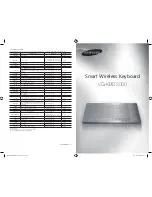
1
MIDI Basics
1. What’s MIDI? . . . . . . . . . . . . . . . . . . . . . . . . . . . . . 1
2. What You Can Do With MIDI. . . . . . . . . . . . . . . . . 2
3. MIDI Channels . . . . . . . . . . . . . . . . . . . . . . . . . . . . 3
4. MIDI Messages . . . . . . . . . . . . . . . . . . . . . . . . . . . . 4
1.
What’s MIDI?
MIDI is an acronym that stands for Musical Instrument Digital Interface,
a technology that allows
electronic musical instruments to communicate with each other, by sending and receiving performance infor-
mation.
Just what do we mean by “performance information”?
Let’s consider what happens when a pianist per-
forms.
The pianist presses a key on a piano or presses a pedal.
These actions are instances of “performance information” and
reflect how the pianist played the instrument. MIDI is used to
capture and express this information electronically. When you
strongly play middle C on a MIDI keyboard, MIDI indicates the
key number as 60, and the strength of playing as 120, for exam-
ple. In this way, MIDI precisely describes your performance infor-
mation in digital form.
This performance information—MIDI data—can be
transmitted
between MIDI-compatible musical instruments, or
saved as a file for later playback. No matter what instrument or
computer you use, the MIDI data will reproduce the original per-
formance exactly the same. (Keep in mind that the actual sound
of the performance may differ from instrument to instrument—
for example, the acoustic piano sound on one instrument may
sound more full and rich than on another—but the basic perfor-
mance will be identical.)
The MIDI data saved as a file can easily be changed.
For
example, you can change an incorrectly played note to the cor-
rect one, change the song tempo, transpose the song to a desired
key, etc. This feature of MIDI is very effective for creating a song
or practicing with a musical instrument.






















